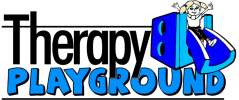Kristin and Jenn talk about infant feeding, focusing on breast and bottle. Infant feeding is not a solely learned behavior; it is a neuro-developed skill, which means a child certain maturity level to effectively feed. In feeding the child completes what’s known as a “suck, swallow, breathe” sequence. This sequence is not usually intact until the age of 37 weeks gestation.
At 37 weeks gestation, is to integrate the muscles of cheeks, jaw, lips, and tongue to prepare a bolus back to the pharynx and reflexively swallow. At that point you’re also going to have a contraction of the muscles of the larynx, pharynx and esophagus, to go ahead and complete the swallow. At the point of swallow, breathing stops.
As far as preemies go, their reflexes of sucking and swallowing are intact, however they don’t have the coordination with breathing and eating so they are forced to decide between eating and breathing. In addition to that, any child with a cranial facial anomaly such as a cleft pallet may experience potential feeding difficulty. Many “drug babies” have feeding issues as well.
Physiologically they need to be able to obtain consistent respiratory rate, heart rate, and oxygenation. You want to feed a baby at a good state of arousal. You don’t want to try to feed a baby who is drowsy, or crying and screaming. Ideally you want to feed at a quiet, alert state.
You then want to look at their non-nutritive suck, such as sucking on a pacifier or finger. They should be able to sustain that suck with a little bit of negative pressure. In normal feeding you’d look for is their posture, their muscle tone, are they rigid in their face? If they have low tone, is their mouth hanging open? Typically a child should be breathing through their nose in a closed-mouth position.
Next, upon presentation of the bottle or breast, that baby should be able to draw it readily into the mouth and begin sucking, which is where the “suck, swallow, breathe” sequence begins that we discussed earlier. It should be consistent over time; there should not be much spillage, or excessive fatigue.
Red flags that parents can look for are changes in state such as looking elsewhere or becoming uncomfortable. Those signs can be difficult to detect. Some obvious signs are spillage, coughing/hiccups, changes in color to the child, respiration changes, or feeding that last more than 30 minutes.
Every child is very different, but in general you want to create a calm feeding environment to help get the child in the quiet alert state. You also want to have the correct position, which is facing upright and facing away for children who are hyper-alert and require much less stimulation. Some children have pooling in the pharynx so you may feed in the side-lying and upright position for cleft-pallet to prevent any nasal regurgitation.
There are variations as far as bottle nipples go, so children cannot handle a fast flow-rate nipple. You may need to thicken the liquid to help control the bolus to push it back further in the mouth. Sometimes you have to provide manual pressure to the cheeks and under the jaw to help with closure around the nipple.
In severe cases there are also systems we use supplemental nursing systems where you can actually attach tubing to the underside of your finger to manipulate how much liquid the child is getting.
If a parent sees any of these red flags or if there is a problem with weight gain they should see their pediatrician and ask for a referral to a speech pathologist who is a specialist in infant feeding.
